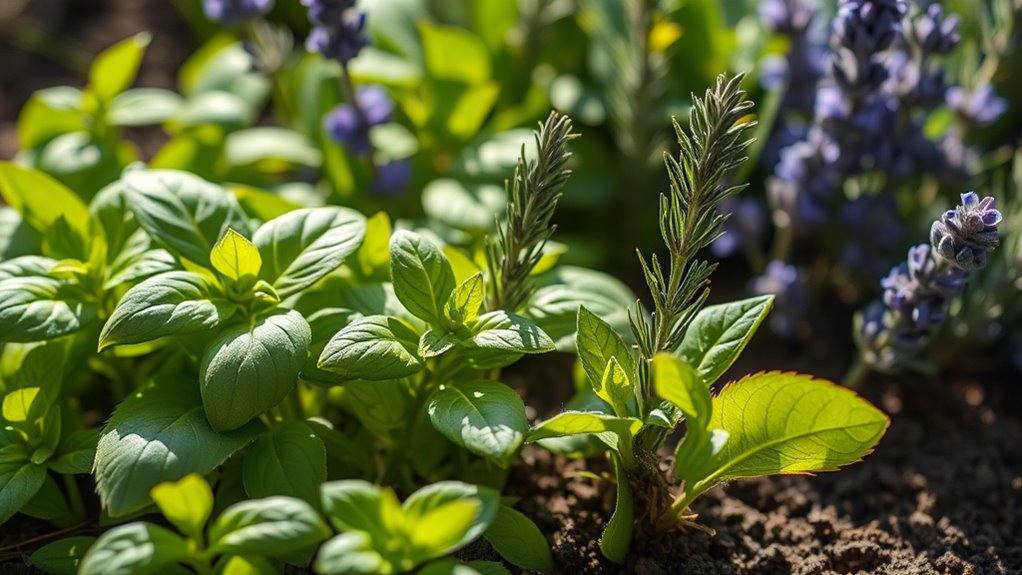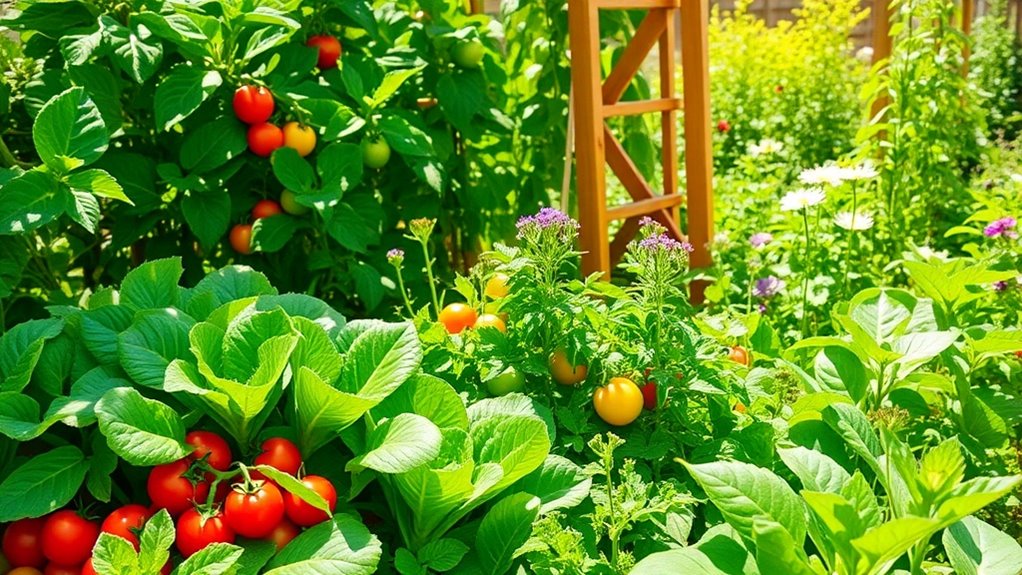These Healing Herbs Grow Fast and Are Easy to Use
If you’re looking to enhance your well-being with minimal effort, consider growing healing herbs in your own space. These plants, like basil and chamomile, not only thrive indoors but also provide various health benefits. You’ll find that they add flavor to your meals, while also serving as natural remedies for common ailments. Curious about how each herb can specifically support your wellness journey? Let’s explore their unique properties and practical uses.
Basil: A Versatile Herb for Healing
Basil, often a staple in kitchens around the world, is more than just a flavorful herb; it’s a powerhouse of healing properties. You can easily grow this versatile herb at home, making it a must-have among healing herbs.
Its anti-inflammatory and antioxidant qualities can aid digestion and boost immunity. Incorporating basil into your meals can enhance both flavor and wellness effortlessly. Additionally, basil can thrive in small patios or indoors, making it an ideal herb for urban gardeners.
Peppermint: A Refreshing Remedy
If you’re looking to further enhance your herbal repertoire, peppermint should definitely be on your radar.
This aromatic herb not only adds flavor to your dishes but also serves as a natural remedy for headaches and digestive issues.
Simply brew fresh leaves in hot water for a soothing tea, or apply diluted oil for instant relief.
It’s refreshingly effective and easy to grow! Additionally, peppermint is known for its health benefits that extend beyond just flavor, making it a versatile addition to any home garden.
Chamomile: The Calming Flower
Chamomile, known for its delicate flowers and soothing properties, is a must-have in your herbal collection.
You can brew it into a calming tea, perfect for unwinding after a long day. Its anti-inflammatory and antioxidant qualities help soothe digestive issues and promote restful sleep.
Simply steep the dried flowers in hot water, and enjoy the fragrant, relaxing experience.
Lavender: Nature’s Stress Reliever
Although stress can often feel overwhelming, incorporating lavender into your daily routine can provide a natural remedy that promotes relaxation and tranquility. You can use lavender in various ways, such as in teas, essential oils, or sachets. Below is a quick guide on the benefits of lavender:
| Use | Benefit | How to Apply |
|---|---|---|
| Essential Oil | Reduces anxiety | Diffuse or inhale directly |
| Tea | Calming effects | Brew and sip before bed |
| Sachets | Sleep aid | Place under your pillow |
| Bath | Muscle relaxer | Add to warm bath water |
| Potpourri | Aromatic | Fill your space with fragrance |
Thyme: A Potent Antiseptic
While many herbs offer health benefits, thyme stands out as a powerful antiseptic that can enhance your home remedy toolkit.
Its essential oil contains thymol, which effectively fights bacteria and fungi. You can make a thyme-infused oil or tea to apply on minor wounds and cuts.
Just remember to keep it handy for those unexpected scrapes and bruises!
Aloe Vera: The Soothing Succulent
Aloe vera, often hailed as a soothing succulent, is a must-have in any home remedy collection.
Its thick, fleshy leaves contain a gel that’s perfect for calming sunburns, cuts, and irritations. Just slice open a leaf and apply the gel directly to your skin.
It’s quick, effective, and natural, making it an ideal choice for daily skincare and soothing relief.





